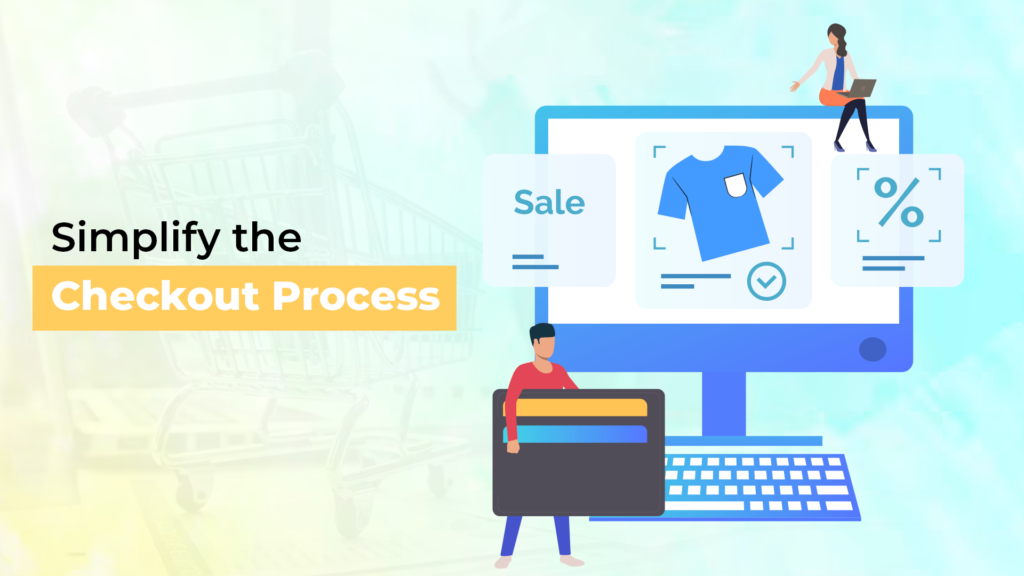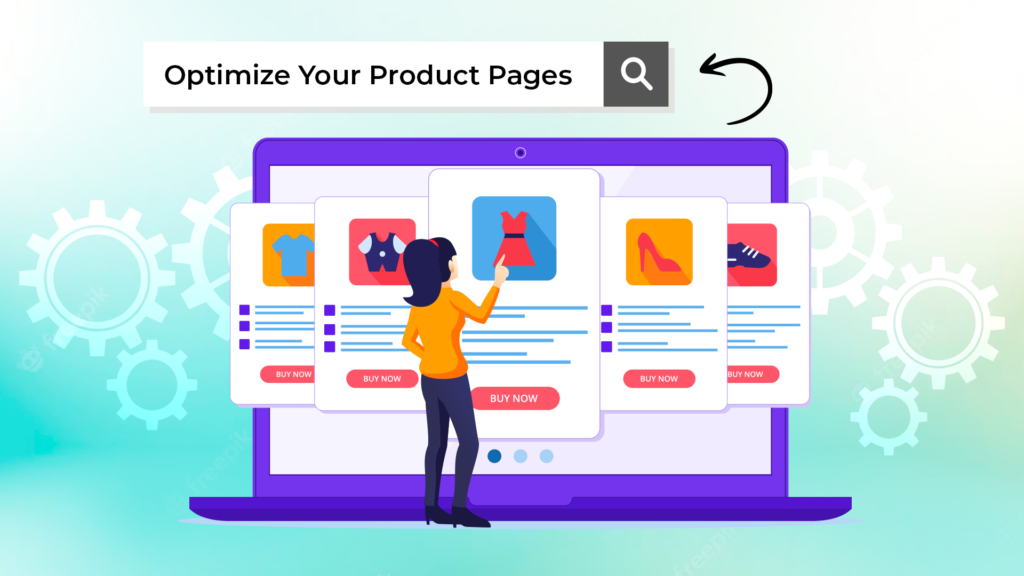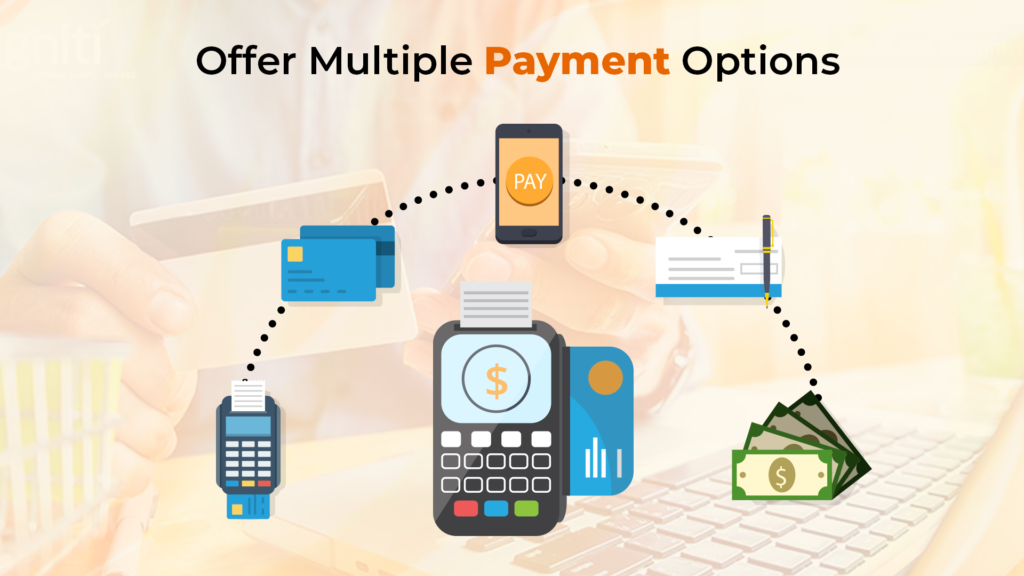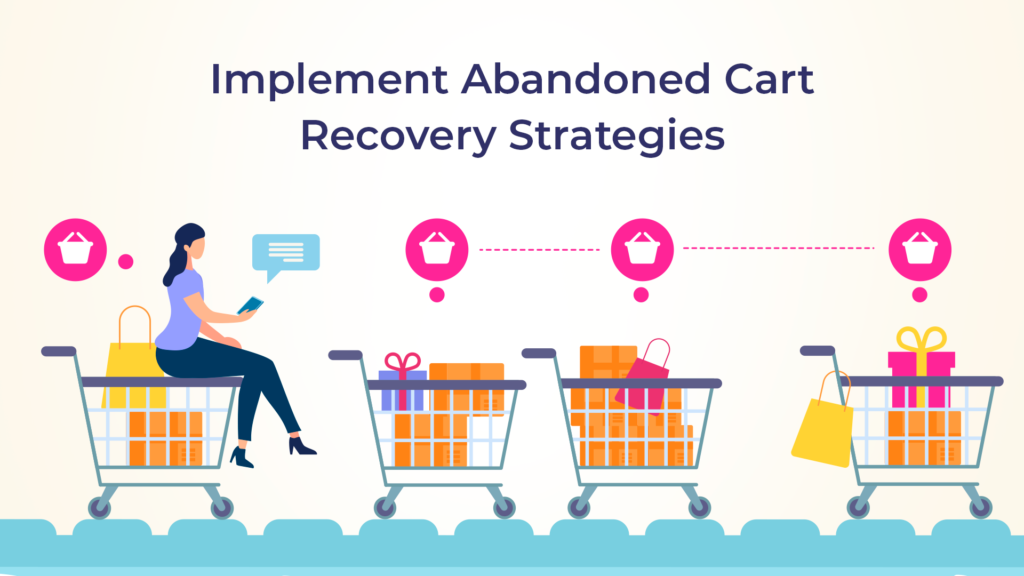In today’s digital age, ecommerce has become an increasingly popular way for businesses to reach customers and sell products online. While setting up an ecommerce website is relatively easy, the challenge lies in converting visitors into paying customers. This is where the ecommerce shopping cart comes in. It’s a crucial component of any online store, as it’s the final stage of the buying process where customers make their purchase.
In this article, we’ll explore five effective ways to increase conversions with your ecommerce shopping cart. By implementing these strategies, you can improve your online store’s performance and drive revenue growth.
Explanation of Ecommerce Shopping Cart
An ecommerce shopping cart is a software application that allows customers to select and store items they wish to purchase while shopping on an online store. It’s a virtual shopping cart that holds items until the customer is ready to check out and complete the purchase. Once the customer has finished selecting items, they can review their cart, make any necessary changes, and proceed to the checkout page to complete the purchase. The shopping cart software manages the order processing, payment, and shipping of the items, making it a critical component of any ecommerce website. A well-designed shopping cart can help increase conversions and boost sales, while a poorly designed one can lead to cart abandonment and lost revenue.
Understanding Your Target Audience

Defining your target audience
Defining your target audience is a crucial step in any marketing strategy, including for ecommerce businesses. Your target audience refers to the group of people who are most likely to be interested in your products or services and who are most likely to become your customers. To define your target audience, you’ll need to consider factors such as demographics, psychographics, and behavior.
Demographics are based on factors such as age, gender, income, education, and location, while psychographics are based on personality traits, values, interests, and lifestyles. Behavior refers to how your target audience behaves when shopping online, such as what they search for, how they interact with your website, and how they make purchasing decisions.
To define your target audience, you can conduct market research, analyze your existing customer data, and create customer personas that represent your ideal customers. Once you have a clear understanding of your target audience, you can tailor your ecommerce store’s design, messaging, and marketing campaigns to better appeal to their needs and preferences. This can help increase conversions and drive revenue growth.
Read More: For Identifying Your Target Audience
Analyzing their shopping behavior
Analyzing your target audience’s shopping behavior is a crucial step in optimizing your ecommerce store for conversions. By understanding how your target audience interacts with your online store and what influences their purchasing decisions, you can make informed decisions on how to improve their shopping experience and increase conversions.
Some key aspects of your target audience’s shopping behavior to analyze include:
- What products or categories are most popular among your target audience?
- How do they navigate your online store?
- What factors influence their purchasing decisions, such as price, shipping options, or product reviews?
- What barriers or pain points may be preventing them from completing a purchase?
To analyze your target audience’s shopping behavior, you can use a combination of analytics tools, customer surveys, and feedback from customer service interactions. By gaining insights into their behavior and preferences, you can make data-driven decisions to improve your ecommerce store and increase conversions. This knowledge helps businesses create strategies that increase consumer satisfaction and loyalty, leading to increased sales and profitability.
Identifying pain points and addressing them
Identifying and addressing pain points is an essential step in improving your ecommerce store’s conversion rate. Pain points refer to areas of frustration or difficulty that customers experience while shopping on your website. These pain points can be barriers that prevent them from completing a purchase or reduce the likelihood of them returning to your website in the future.
Some common pain points for ecommerce customers include:
- Slow website loading times
- Difficulty navigating your website
- Limited payment options
- High shipping costs
- Security concerns around payment processing
To identify pain points, you can use analytics tools, customer surveys, and feedback from customer service interactions. Once you have identified pain points, you can take steps to address them. For example, if slow website loading times are a pain point, you could optimize your website’s images or invest in faster hosting. If customers are having difficulty navigating your website, you could improve your website’s navigation or add search functionality to help them find what they’re looking for more easily.
Addressing pain points can help improve your ecommerce store’s user experience, increase customer satisfaction, and ultimately lead to more conversions and revenue growth.
Simplify the Checkout Process

Streamlining the checkout process
Streamlining the checkout process is a key way to increase conversions for your ecommerce store. The checkout process is the final step in the customer journey and can significantly impact whether or not customers complete their purchases. A complicated or confusing checkout process can lead to cart abandonment, while a streamlined process can help increase conversions and drive revenue growth.
To streamline the checkout process, consider the following tips:
- Offer guest checkout options to reduce friction for first-time customers
- Use autofill to make it easy for customers to enter their billing and shipping information
- Use progress indicators to help customers track their progress through the checkout process
- Provide clear information about shipping and handling costs
By streamlining the checkout process, you can reduce the number of barriers that prevent customers from completing their purchases, improving their shopping experience, and increasing conversions for your ecommerce store.
One-page checkout vs multi-page checkout
One-page checkout: It involves displaying all checkout fields on a single page, often with the use of collapsible sections or tabs. This can be beneficial for customers who want to complete their purchase quickly and easily, as all the necessary information is presented in one place. One-page checkout can also reduce cart abandonment rates, as customers are less likely to get frustrated or confused by a lengthy checkout process. However, one-page checkout may not be suitable for stores with a large number of checkout fields or complex checkout processes, as it can become overwhelming or confusing for customers.
Multi-page checkout: It involves breaking up the checkout process into multiple pages, with each page focusing on a specific set of fields. This can make the checkout process more manageable for customers and may be more suitable for stores with complex checkout processes or a large number of checkout fields. Multi-page checkout can also provide more opportunities to upsell or cross-sell products to customers. However, multi-page checkout can increase cart abandonment rates if customers become frustrated or overwhelmed by the number of pages they need to complete.
Ultimately, the best checkout process for your ecommerce store will depend on your specific needs and the preferences of your target audience. It’s important to test different checkout processes and gather feedback from customers to determine which option works best for your store.
Eliminating distractions and unnecessary steps
Eliminating distractions and unnecessary steps can significantly improve the conversion rate of your ecommerce shopping cart. The checkout process should be as simple and streamlined as possible, with no distractions or barriers that could prevent customers from completing their purchase.
To eliminate distractions and unnecessary steps, consider the following tips:
- Remove any links or menus that could take customers away from the checkout page
- Eliminate any optional or non-essential fields from the checkout form
- Use clear and concise language to guide customers through the checkout process
- Avoid using pop-ups or other distractions that could interrupt the checkout process
- Provide a progress bar or other visual indicator to help customers track their progress through the checkout process
- Offer a clear and easy-to-understand return policy to reassure customers about their purchase
By eliminating distractions and unnecessary steps, you can help ensure that customers remain focused on completing their purchase and reduce the likelihood of cart abandonment. This can help increase conversions and drive revenue growth for your ecommerce store.
Optimize Your Product Pages

High-quality product images and descriptions
High-quality product images and descriptions are crucial for converting visitors into customers in your ecommerce shopping cart. Your product images and descriptions are often the first impression customers have of your products, and they play a key role in influencing purchasing decisions.
To ensure that your product images and descriptions are of the highest quality, consider the following tips:
- Use high-resolution images that show the product from multiple angles
- Use consistent lighting and backgrounds to create a professional look
- Use descriptive and informative product titles and descriptions that accurately represent the product and its features
- Use bullet points to highlight the key features and benefits of the product
- Include dimensions, size charts, and other relevant information to help customers make informed purchasing decisions
- Use customer reviews and ratings to provide social proof and build trust with potential customers
- Use video and 360-degree images to provide a more immersive and interactive product experience
By investing in high-quality product images and descriptions, you can create a more engaging and persuasive shopping experience for your customers. This can help increase conversions and drive revenue growth for your ecommerce store.
Product reviews and ratings
- Product reviews and ratings are a powerful tool for increasing conversions and building trust with customers in your ecommerce shopping cart. When potential customers see positive reviews and high ratings from other customers, they are more likely to trust your products and make a purchase.
- To make the most of product reviews and ratings, consider the following tips:
- Make it easy for customers to leave reviews and ratings by including a clear call-to-action on your product pages
- Follow up with customers after their purchase and encourage them to leave a review or rating
- Display reviews and ratings prominently on your product pages, and consider including an average rating or summary at the top of the page
- Respond to negative reviews in a professional and constructive manner, and use them as an opportunity to improve your products or customer service
- Consider offering incentives or rewards for customers who leave reviews or ratings, such as a discount on their next purchase
By leveraging product reviews and ratings, you can build trust with potential customers and increase the likelihood of conversions. However, it’s important to ensure that the reviews and ratings on your site are genuine and authentic, as fake or misleading reviews can quickly erode trust and damage your reputation.
Cross-selling and upselling strategies
The Cross-selling and upselling strategies can help increase the average order value and revenue per customer in your ecommerce shopping cart. Cross-selling involves suggesting related products to customers based on their current purchase, while upselling involves suggesting higher-end or premium versions of the same product.
To effectively cross-sell and upsell in your ecommerce shopping cart, consider the following strategies:
- Analyze customer purchase and browsing behavior to identify opportunities for cross-selling and upselling
- Use product recommendations and personalized product suggestions to offer relevant cross-selling and upselling options
- Display related products and upsell options prominently on product pages and during the checkout process
- Use discounts and bundle deals to incentivize customers to purchase related or upgraded products
- Use persuasive language and social proof, such as customer reviews and ratings, to encourage customers to consider cross-selling and upselling options
It’s important to ensure that your cross-selling and upselling strategies are relevant and add value for the customer, rather than simply pushing additional products for the sake of increasing sales. By offering targeted and personalized cross-selling and upselling options, you can increase the likelihood of conversions and drive revenue growth for your ecommerce store.
Explore More: To know about Product Page
Offer Multiple Payment Options

Common payment options for ecommerce businesses
Offering a variety of payment options is crucial for ecommerce businesses, as it can help increase conversions and provide a more convenient and flexible shopping experience for customers. Here are some of the most common payment options for ecommerce businesses:
Credit and debit cards: Accepting major credit and debit cards, such as Visa, Mastercard, and American Express, is a must for most ecommerce businesses. This is often the most popular and convenient payment option for customers.
PayPal: PayPal is a widely used payment option that allows customers to make purchases using their PayPal account balance or linked bank account or credit card. It can be a popular option for customers who don’t want to enter their credit card information directly on a website.
Bank transfers: Some customers prefer to pay using bank transfers, which involve transferring funds directly from their bank account to yours. This option may be more popular in certain regions or for high-value purchases.
Mobile payments: Mobile payment options, such as Apple Pay or Google Wallet, allow customers to make purchases using their mobile devices. This can be a convenient option for customers who are on-the-go and prefer to use their mobile devices for shopping.
Digital wallets: Digital wallets, such as Amazon Pay or Stripe, allow customers to store their payment information securely and make purchases quickly and easily on multiple websites. This can be a popular option for frequent online shoppers who want to streamline the checkout process.
By offering a variety of payment options, you can cater to the needs and preferences of different customers and increase the likelihood of conversions in your ecommerce shopping cart.
Emerging payment options such as cryptocurrency
Emerging payment options, such as cryptocurrency, are becoming more popular in ecommerce. A digital or virtual currency that utilizes encryption methods to ensure transaction security and regulate the generation of new units is known as cryptocurrency. Some ecommerce businesses are starting to accept cryptocurrencies, such as Bitcoin or Ethereum, as a payment option. However, due to the volatility and relatively low adoption of cryptocurrencies, it is not yet a widely accepted payment option for ecommerce businesses. Nevertheless, it is worth considering as a potential emerging payment option in the future as more customers become familiar with it.
The importance of security and trust in payment processing
Security and trust are crucial for payment processing in e-commerce because customers want to feel confident that their personal and financial information is safe when making online purchases. If customers don’t trust the payment processing system, they are less likely to make a purchase and may take their business elsewhere.
To ensure security and trust in payment processing, ecommerce businesses should implement secure payment gateways and encryption technologies, such as SSL (Secure Socket Layer), to protect customer data from cyber attacks and unauthorized access. Additionally, businesses should follow industry best practices and comply with data protection regulations, such as the Payment Card Industry Data Security Standard (PCI DSS).
Overall, prioritizing security and trust in payment processing is essential for ecommerce businesses to maintain customer loyalty and grow their revenue.
Implement Abandoned Cart Recovery Strategies

Understanding the reasons for cart abandonment
Cart abandonment occurs when a customer adds items to their shopping cart but then leaves the website without completing the purchase. Understanding the reasons for cart abandonment is crucial for ecommerce businesses, as it can help identify and address issues that may be causing potential customers to abandon their carts.
Some common reasons for cart abandonment include unexpected shipping costs, complicated checkout processes, lack of payment options, security concerns, and a lack of trust in the website or brand. Other factors, such as slow loading times, website errors, or a lack of product information or reviews, can also contribute to cart abandonment.
By identifying the main reasons for cart abandonment and addressing these issues, ecommerce businesses can improve the overall shopping experience and increase the likelihood of conversions. This may involve simplifying the checkout process, offering free or transparent shipping options, providing more payment and security options, and improving website speed and functionality.
Email and push notification reminders
Email notification: Email reminders are typically sent to customers who have abandoned their shopping carts, reminding them of the items they left behind and encouraging them to complete their purchase. These emails may include special offers or incentives, such as free shipping or a discount code, to entice customers to return to the website and complete their purchase.
Push notifications: On the other hand, push notifications are brief messages that are sent directly to a customer’s mobile device or desktop, prompting them to return to the website and complete their purchase by reminding them of their abandoned cart. Push notifications can be particularly effective in reaching customers who are on-the-go and may not regularly check their email.
Both email and push notification reminders can help reduce cart abandonment rates and increase conversions in your ecommerce shopping cart. However, it’s important to use these strategies sparingly and strategically, as too many reminders can be perceived as spam and have the opposite effect.
Conclusion
In conclusion, increasing conversions with your ecommerce shopping cart requires a strategic approach that focuses on identifying and addressing pain points, streamlining the checkout process, and offering a variety of payment options. By understanding your target audience and their shopping behavior, optimizing product descriptions and images, and implementing cross-selling and upselling strategies, you can drive revenue growth and improve the overall customer experience. With these key elements in place, your ecommerce business can thrive in today’s competitive online marketplace.
Frequently Asked Questions(FAQs)
What is an Ecommerce Shopping Cart?
An Ecommerce Shopping Cart is a software application that allows online shoppers to select products they want to buy from an online store and keep track of the items they have selected.
What are the key features of an Ecommerce Shopping Cart?
An Ecommerce Shopping Cart should have some essential features, including a user-friendly interface, the ability to accept various payment methods, the ability to calculate shipping and taxes, the ability to store customer data, inventory management, and the ability to create discounts and coupons.
How can I choose the right Ecommerce Shopping Cart for my business?
To choose the right Ecommerce Shopping Cart for your business, consider your budget, the size of your business, your target audience, and the features you require. You should also look for a shopping cart system that is easy to integrate with your website and other business applications.
How can I ensure the security of my customers’ data when using an Ecommerce Shopping Cart?
To ensure the security of your customers’ data when using an Ecommerce Shopping Cart, you should choose a system that complies with industry standards for data security and privacy, such as PCI DSS. You should also use secure encryption protocols, have a secure server, and regularly update your software to protect against vulnerabilities and potential hacks.
What are the advantages of using an Ecommerce Shopping Cart for my business?
Using an Ecommerce Shopping Cart offers several advantages for your business, including increased sales, improved customer satisfaction, a more efficient and streamlined order management process, and the ability to reach a broader audience. It also enables you to gather and analyze customer data to help you make informed business decisions.




Leave a Reply